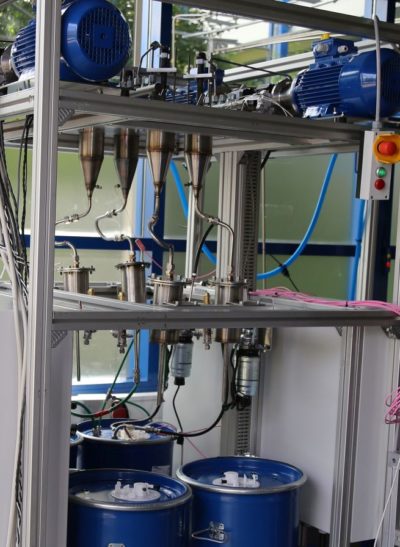HiL test methods for fuels and components
Benchmark and development support
In the product development of engines and heaters, conventional test procedures are very time-consuming and expensive. For faster and more efficient development, modern testing methods and analysis tools are required. In the automotive industry, HiL test methods (hardware-in-the-loop) have become established in connection with electronic components. The components to be tested are integrated into a simulated application environment, interconnected and controlled by test software in such a way that they are loaded realistically as in the later application.
TEC4FUELS and OWI have adapted the concept of HiL test methods in such a way that they can be used for the investigation of fuels and fuel-bearing technical components of engines and heating systems. HiL test methods can be used to support development. Their advantage is that a new development version can be tested under the same criteria and conditions. In addition, they can provide valid results for benchmarking technical components, additives and fuels (blends).

HiL test method: Test rig with integrated Common-Rail-System for testing diesel injectors, fuels and additives. Photo: Tec4Fuels
HiL test methods for alternative Fuels
HiL test methods can also be used for the qualification of fuel-bearing components in operation with alternative (synthetic and biogenic) fuels. These are fuels such as oxymethylene ether (OME), dimethylene ether (DME), methanol, methanol-to-gasoline (MtG), 1-octanol, 2-butanol, hydrogenated vegetable oils (HVO) or biodiesel (FAME). Test runs on HiL test benches of blends with different proportions of alternative fuels allow statements to be made about interactions (e.g. formation of deposits) and possible countermeasures through fuel conditioning or design changes to components.
This concerns, for example, the storage stability of new fuels and their blends with conventional diesel fuels as well as their possible interactions with fuel-leading components and the materials in vehicles. Possible interactions of the fuel with the engine oil can also play a role.
The design of the test benches serves to simulate the real environment of the system, for example an engine or a heater. In the test method, the fuel is continuously pumped in a circuit and flows through combustion components such as filters, pumps (fuel oil pump or diesel fuel in tank pump), preheaters and nozzles or other internals. However, the middle distillate is not burned during the test, but returned to the tank. The HiL system consists of up to four independent apparatuses in which different middle distillates can be adjusted to several test parameters. During the test, the fuel is exposed to loads and ages, which intensifies the test conditions as the components in the test stand come into contact with the ageing products. The advantage of this HiL concept is that, with up to 60 litres of middle distillate per apparatus, valid results are usually available after an operating time of a maximum of 1,000 hours, which allow statements to be made about the behaviour of various middle distillates, blends, additives and their compatibility with components. The data collected during the test are recorded and evaluated and incorporated into the result.
At Tec4Fuels, HiL test benches are used, for example, in the quick testing of diesel injectors and in the compatibility test of fuels and combustibles with heating and engine components.
